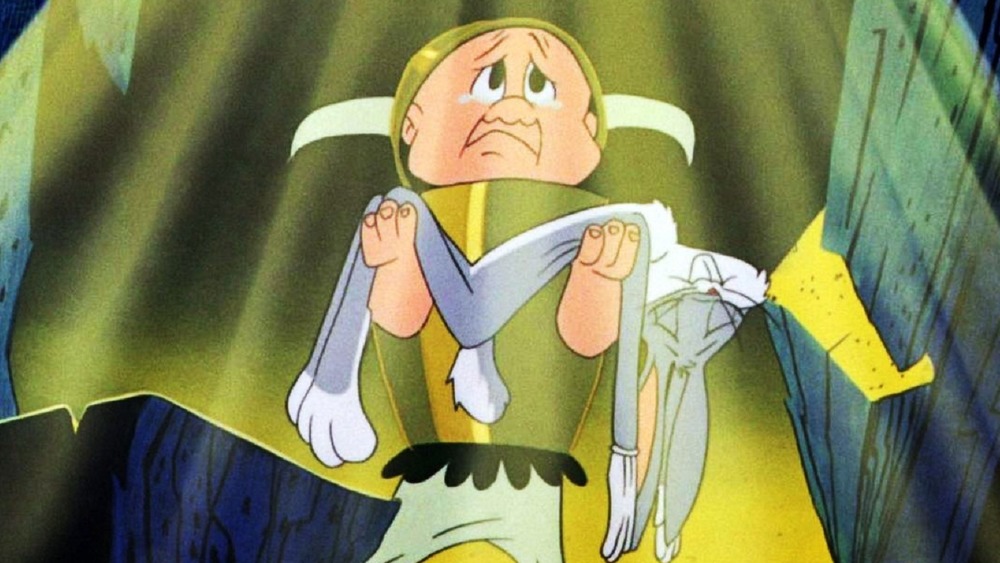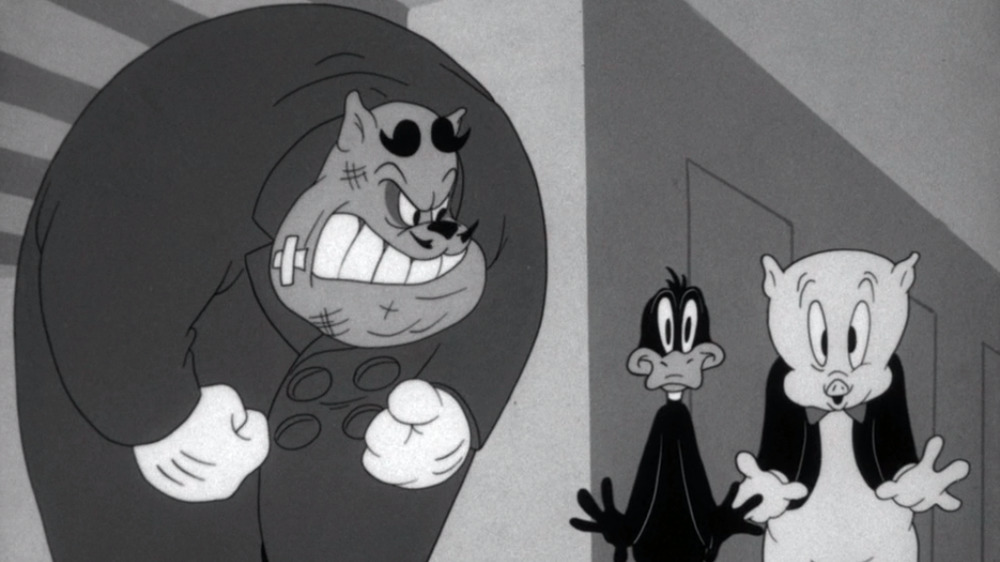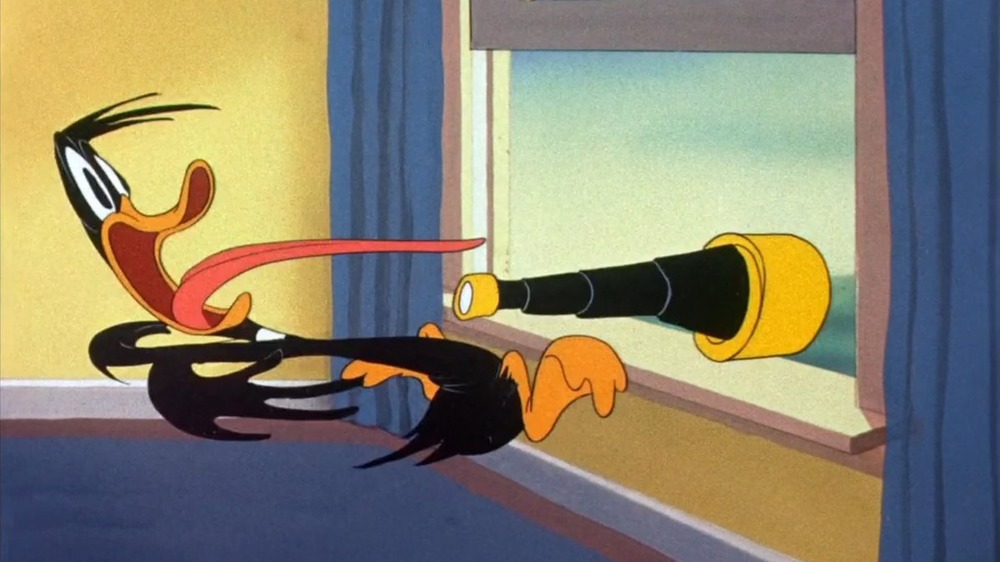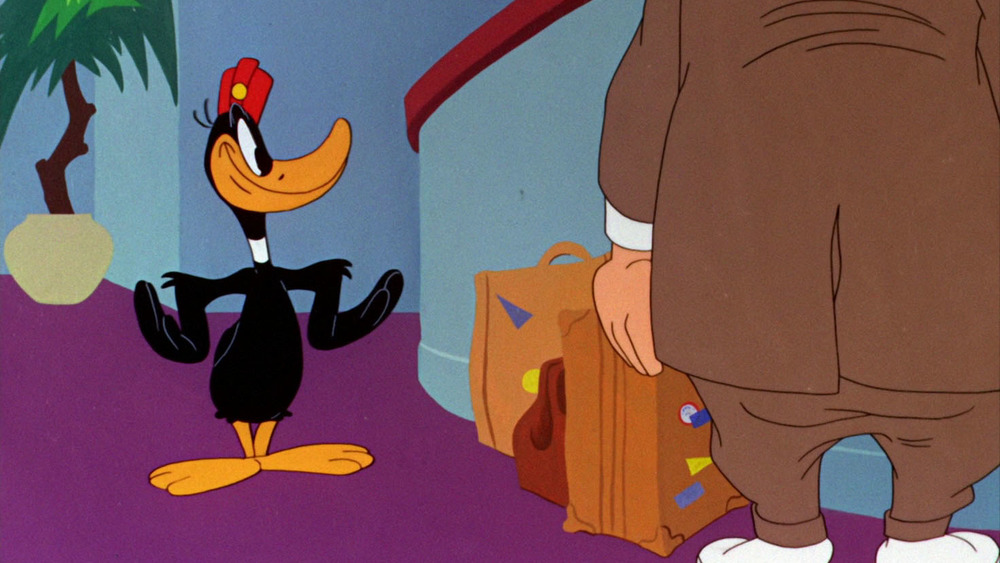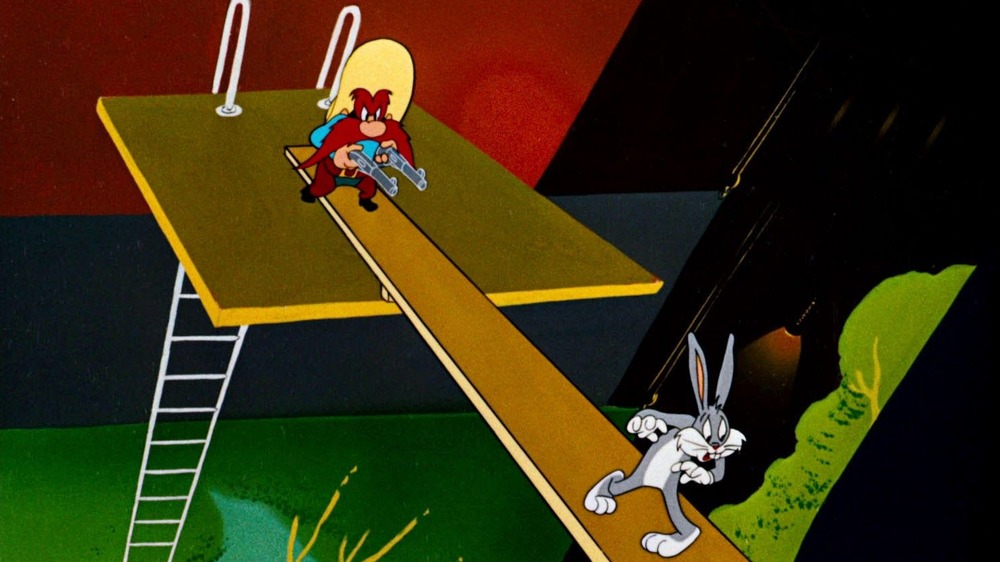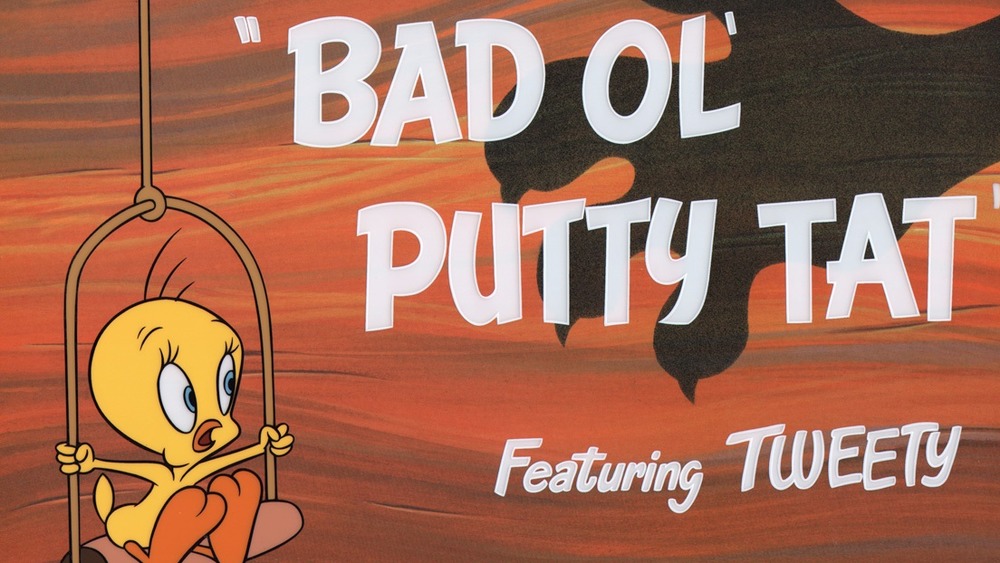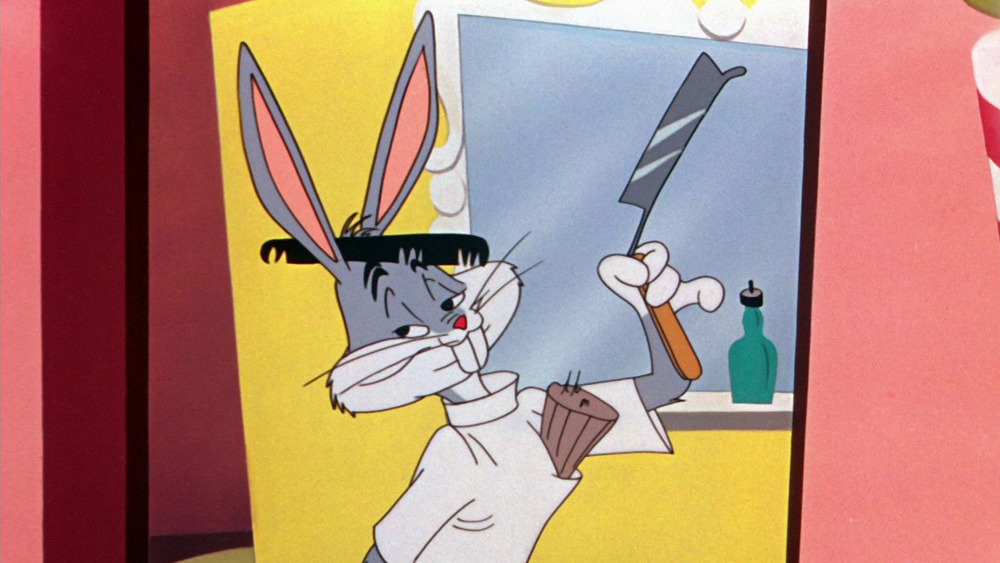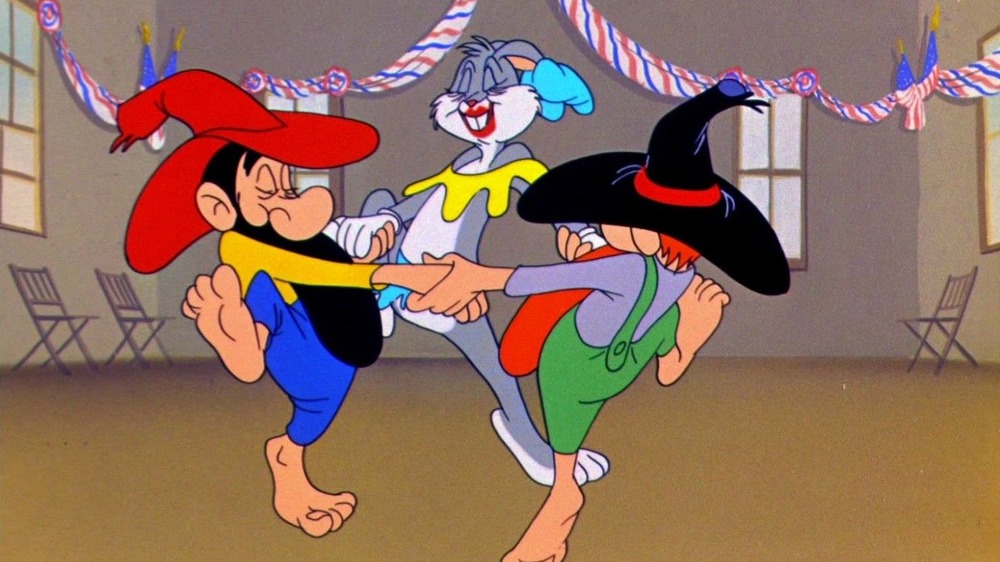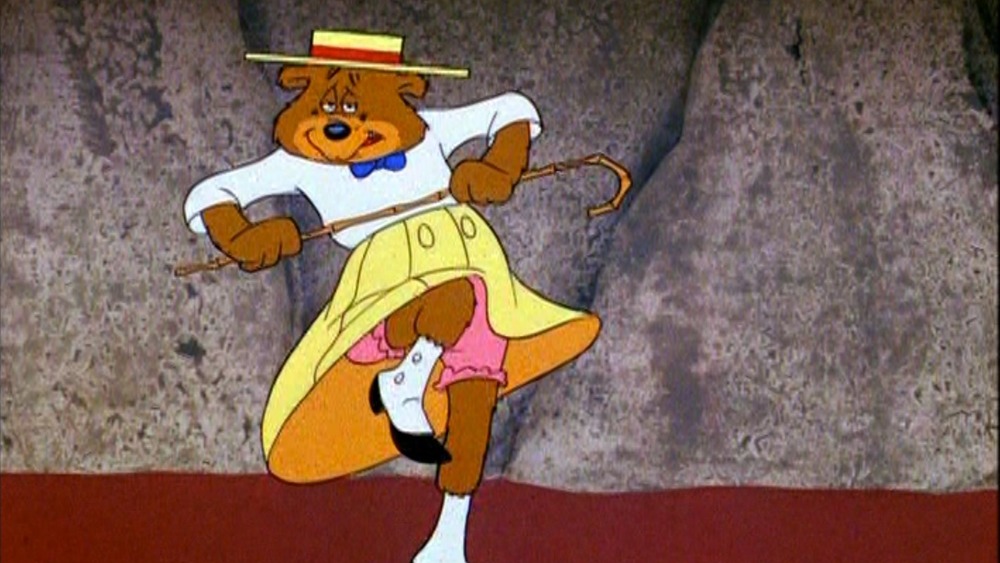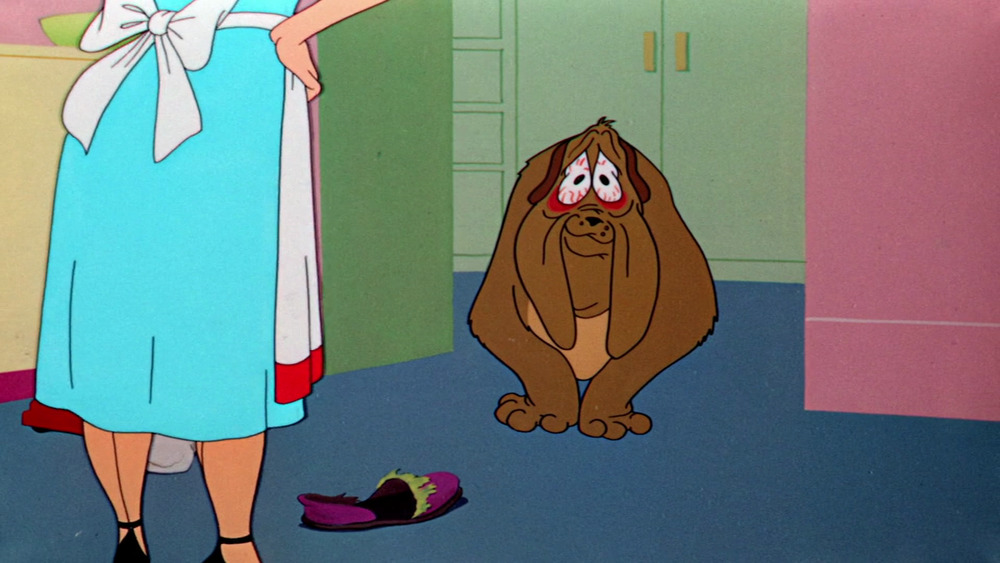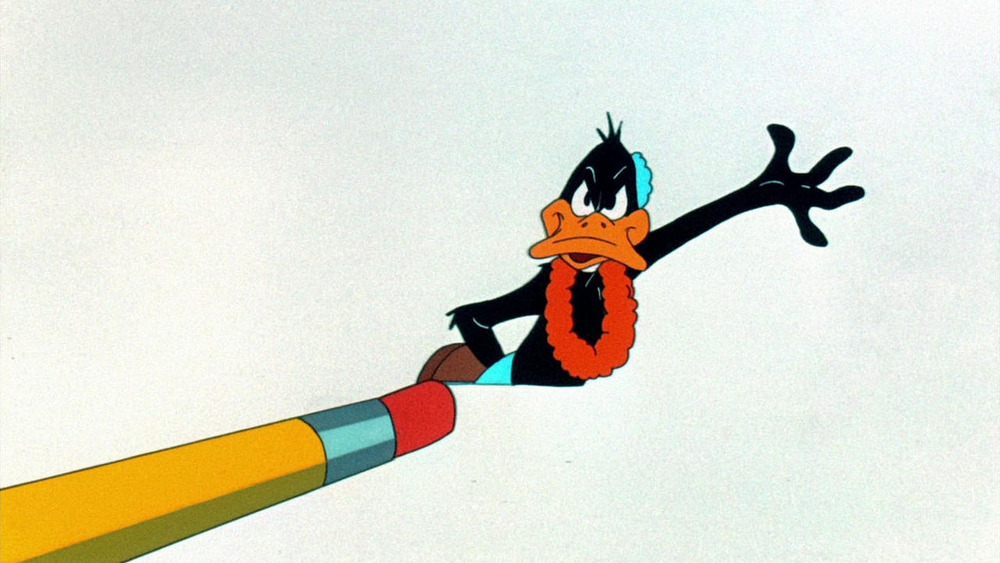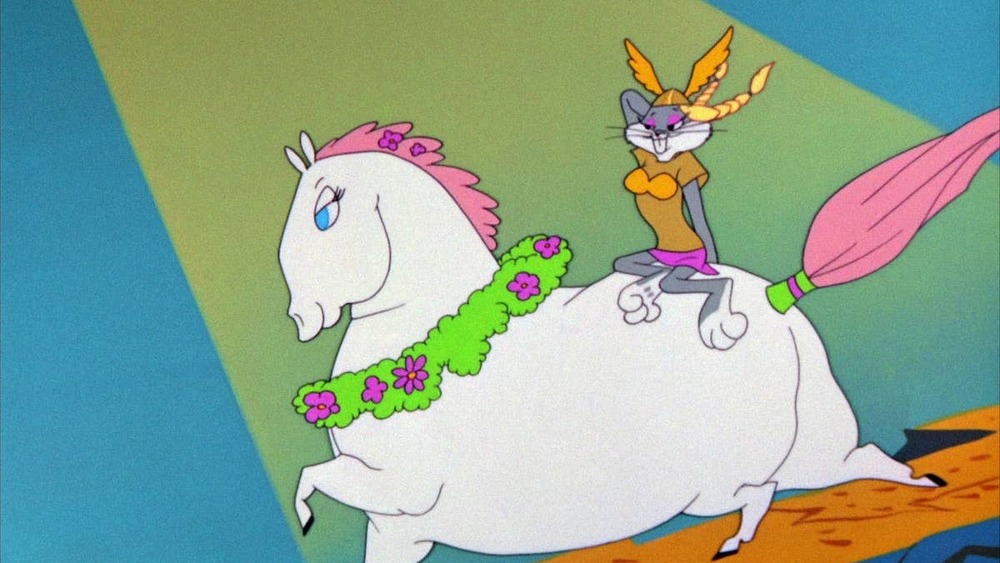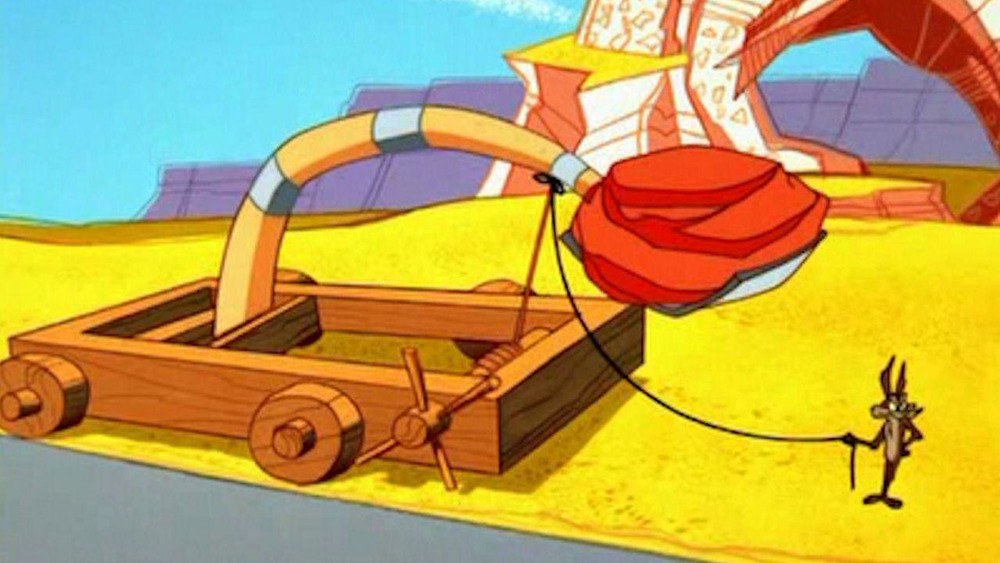The Best Looney Tunes Cartoons That Still Hold Up Today
In 1930, two ex-Disney animators, Hugh Harman and Rudy Ising, released the first official short in the Looney Tunes series. Within the next decade, a team of brilliant filmmakers would transform the series from a pale imitation of Disney's Mickey Mouse and Silly Symphonies cartoons into some of the most startlingly original films ever made.
Looney Tunes could run from hilarious lowbrow comedy to the heights of high art, and characters like Bugs Bunny, Daffy Duck, and Wile E. Coyote have become American icons in a way that would make any flesh-and-blood star jealous. With over 1,000 cartoons in the series, it can be hard to know where to begin, but with so many of them available for HBO Max subscribers (including most of the cartoons on this list), there's no better time to start. From canonical classics to buried treasures, here are some of the funniest, cleverest, and all-around best Looney Tunes cartoons ever made.
Porky Pig's Feat opened up a whole new style of animation
Frank Tashlin became one of the most beloved comedy directors of Hollywood's Golden Age, bringing cartoon chaos to his movies with stars like Jerry Lewis and Jayne Mansfield. He came by his style naturally. Before he brought cartoon language to live-action movies, he brought cinematic language to Looney Tunes.
Before Tashlin, cartoons didn't really do much with the camera, since they only needed to leave it stationary to photograph two-dimensional drawings lying flat on a desk. Tashlin opened up new possibilities, simulating complex shots and dynamic camera angles. And few of his cartoons did this as well as Porky Pig's Feat.
In this cartoon, Porky Pig and Daffy Duck try to escape from a hulking hotel manager who holds them prisoner until they can pay their bill. This sets up a series of hilarious gags as they try to get out, and they're all the more hilarious for the way Tashlin presents them. There's one dizzying long shot of the hotel as Porky and Daffy swing out on a bedsheet rope, all the way into the camera. In another, Tashlin simulates a mobile live-action camera as the manager falls down the stairs, following him as he goes before revealing the long way he still has to fall. In yet another, we get an extreme close-up of the manager threatening Daffy but still get to see Daffy's reaction as he's reflected in the manager's monocle.
Draftee Daffy is Looney Tunes animation at its most animated
Most viewers today think of Daffy Duck as the ultimate loser, but he began as Warner Brothers' first stab at a Bugs Bunny-style trickster hero. In the '30s and '40s, he hadn't evolved into Bugs' opposite yet. If anything, he was Bugs but more so, even more full of manic energy and rebellious anarchy.
That was never truer than in the cartoons directed by Bob Clampett. In Draftee Daffy, Clampett offers the best of both worlds, making Daffy the fall guy for a more competent adversary but using the little black duck's manic energy to make his suffering even funnier.
In this wartime adventure, Daffy celebrates the news of another Allied victory by putting on a song and dancing alone in his house. But he changes his tune pretty quick when he gets a letter informing him he's been drafted into the Army. Soon, Daffy's visited by the unassuming "little man from the draft board" and starts concocting increasingly elaborate plans to get away from him.
The implacable little man is the perfect enemy for Daffy, the immovable object to his unstoppable force. While Daffy frantically flails in every possible and impossible direction — there's a running gag where he literally throws off sparks — the little man hardly moves, simply materializing wherever Daffy runs to. And Clampett's animators beautifully capture Daffy's manic energy, turning him into a living liquid that can stretch three or four times his height every time he jumps.
A Pest in the House is a Looney Tunes masterpiece
Looney Tunes shorts are hilarious because of the shocking amounts of mayhem they throw at the screen, but the best ones are even funnier because the chaos is carefully controlled. Just look at A Pest in the House. It wrings an incredible number of laughs from a simple, formulaic setup. Elmer Fudd is a hotel manager with a guest who demands a nice, quiet room to sleep in and threatens to clean Elmer's clock if anyone wakes him up. Unfortunately, Daffy the bellhop, either obliviously or because he enjoys stirring things up, makes sure the guest doesn't get a wink of sleep.
It all sounds predictable, but director Chuck Jones' genius is using that to his advantage. We know what's going to happen, so Jones slows down the payoff to let us enjoy the anticipation. Every time the guest marches downstairs to cave Elmer's face in, he's accompanied by composer Carl Stalling's slow, patient bassoon cover of "Pop Goes the Weasel."
And Jones and writers Tedd Pierce and Michael Maltese vary up the formula to play with our expectations, with Elmer hiding inside a medieval knight's helmet and, finally, promoting Daffy to manager. It seems to work for a second, as the guest winds up to punch Daffy ... then swerves and goes for Elmer instead. A Pest in the House also shows Jones' great skill with facial acting, with the guest's frozen, dazed expression getting more laughs than more active animation possibly could.
High Diving Hare is a well-oiled laugh machine
Friz Freleng was Looney Tunes' master craftsman. He got comic timing down to an art form. In his memoir, Chuck Amuck, Chuck Jones said Freleng actually wrote his scripts out as sheet music to hit each laugh with musical perfection. And he never did it better than with High Diving Hare.
Here, Bugs Bunny is the MC for a theater where Fearless Freep is supposed to perform his high-diving act. When Freep can't make it, Fearless Freep fanboy Yosemite Sam demands Bugs dive in his place. Bugs, of course, not only gets out of it, but he launches Sam off the diving board — over and over again.
Freleng takes his time setting up the short's premise, and from there, he builds to a crescendo, with Bugs getting Sam over the edge quicker and quicker every time until, in an amazing payoff, we just see Sam climbing up the ladder and immediately falling down again.
Freleng has said he hated Elmer Fudd because he was so harmless that it wasn't any fun to watch Bugs bully him. So he created Yosemite Sam, a tiny terror of a man who posed a much more credible threat, and High Diving Hare shows just how much fun it is to watch his macho bluster get shown up. Mel Blanc's bellowing voice for Sam deserves a lot of credit for that, and like the trademark red hair, there's rumors it's based on Freleng himself!
Bad Ol' Putty Tat shows Sylvester and Tweety at their finest
Bad Ol' Putty Tat opens with a beautiful illustration of the combination of subtlety and in-your-face comedy that makes Looney Tunes so great. The camera slowly moves down Tweety's barbed wire-covered birdhouse to reveal the mangled and very angry Sylvester below. It's a moment of cartoon violence that's all the funnier for only existing in viewers' heads.
There's a similar moment later where a hilariously goony badminton player, who bounces along like he's dancing to the score, mistakes Tweety for a badminton birdie. We see Sylvester pull out a club, the man walks off-screen, and at just the right moment, we hear a thud! And Sylvester reemerges wearing his clothes.
Earlier, Sylvester gets around Tweety's home security by using a corset as a trampoline, which backfires when Tweety turns out to be ready for him, and the hapless cat keeps getting bounced back into his clutches so Tweety can clobber him with a series of different weapons. Director Friz Freleng's mastery of timing is on full display here as Tweety pauses from his diatribe with Sylvester whenever he falls out of sight, giving the rant an almost poetic rhythm. And we can't forget sound effects maestro Treg Brown's hilarious byoo! sound for the trampoline that ties the whole thing together.
Rabbit of Seville cartoonifies a classic opera
By 1950, the Looney Tunes crew had been making Bugs Bunny cartoons for a decade, and it must've been hard to find new ways to keep them fresh. But in Rabbit of Seville, Chuck Jones and Michael Maltese used the familiarity of the formula to their advantage by combining it with the world of opera, where the performers follow the same steps every time. In this parody of Gioachino Rossini's The Barber of Seville, Elmer Fudd chases Bugs Bunny into an opera house, which Bugs turns into an opportunity to humiliate the hunter in time with Rossini's music.
The whole cartoon is sung through until Bugs' final line, "Eh, next," and the opera framework makes the old formula new again. In the climax, Jones almost seems to be making fun of the whole thing, as Bugs and Elmer keep running on and offstage to threaten each other with bigger and bigger weapons. And given that the Cold War arms race was going on at the time, it's hard not to imagine Jones and Maltese had some real-world absurdity in their sights, too. Rabbit of Seville is also a great showcase for Bugs' evolving personality, as he stays totally cool through all the destruction he causes, making for a hilarious contrast.
Hillbilly Hare builds to one of Looney Tunes' longest and funniest gags
After Bob Clampett left Warner Bros. in the 1940s, his unit went to star animator Bob McKimson, who kept his mentor's manic energy alive until the studio itself shut down in the early '60s. McKimson is often overlooked in comparison to his peers, but Hillbilly Hare proves he can tickle your funny bone with the best of them.
This one sends Bugs to the Ozarks, where he gets caught up in a feud with hillbilly brothers Curt and Punkinhead Martin. There's a lot of good stuff here, but things really take off in the second half, which McKimson and writer Tedd Pierce devote to one long, hysterical set piece. Dressing up like a pretty girl, Bugs lures Curt and Punkinhead into a dance hall. They square dance along with the song on the jukebox until Bugs, in one fluid, beautifully animated motion, changes out of his dress, unplugs the jukebox, and pulls out the fiddle he stashed on top of it. Bugs makes up his own dance, and Curt and Punkinhead follow as he leads them across the country and convinces them to horribly mangle each other, expressions of hilarious confusion on their faces all the while. The gag keeps building for around three minutes, and in all that time, it never runs out of steam.
A Bear for Punishment turns Father's Day into a bloodbath
Not every Looney Tunes cartoon features a beloved star. After all, the series was sold to theaters solely on the Looney Tunes name, freeing up creators to tell standalone stories and try out new characters. And those include the dysfunctional family in A Bear for Punishment – hulking "Junyer," tiny, angry Paw, and deadpan Maw.
A Bear for Punishment starts out serenely, which is always a good sign things are about to get very, very wild. We get a nice, long scene of the three bears peacefully sleeping until dozens of alarm clocks go off to wake up Junyer for Father's Day. But all of Junyer's "gifts" end up very badly for Paw, who gets sliced up, blown up, and soaked by the cartoon's end.
But the real hilarity is in the understated reactions — Paw's nervous laugh as he sees Junyer about to step on a roller skate with a tray full of food, Maw covering Paw's cake with a shroud after Junyer shaves him with a dull razor, and the shots of Paw's enraged and baffled reactions to Junyer and Maw's recital. That recital provides the cartoon's funniest moment, as Maw performs an incredibly acrobatic tap dance routine, all without once dropping her permanently bored expression.
Feed the Kitty will make you laugh and cry
In Feed the Kitty, a dog named Marc Anthony adopts a little kitten and tries to hide it from his owner. He finally stows it in the flour ... just as his owner gets a cupful to bake cookies. The owner then throws Marc Anthony out, and even though we've seen the kitten escape, Marc Anthony watches in horror as he imagines it being chopped up, rolled out, and sliced up.
The dog never says a word, so the animation has to do a lot of work, and it's more than up to the task. In a classic scene, Marc Anthony watches through the window as all kinds of horrors visit what he thinks is the kitten, his expressions getting more hilariously grotesque every time we cut back to him. If it looks familiar, director Pete Docter confirmed on the Monsters, Inc. DVD commentary that it inspired the trash compactor scene.
Exaggeration makes for great comedy, but it can also heighten emotions. Chuck Jones makes the dog and cat's relationship real and meaningful in very little time, and when Marc Anthony's huge, red eyes start to fill with tears, yours might, too. But one of the most powerful moments is also one of the smallest, as Marc Anthony's owner offers him a kitten-shaped cookie, and he tries to let it ride on his back like the real kitten did, then breaks down crying.
Duck Amuck is an existential journey through the animation process
Chuck Jones is more responsible than anyone else for turning Daffy Duck into the loser we all know and love, and Daffy was never more down and out than he was in Duck Amuck. In this classic, Daffy finds himself at the mercy of his own creator, who silences him, erases him, redraws him, and makes his life miserable. (We won't spoil the faceless animator's identity for you, but it's a twist worthy of The Sixth Sense).
Playing with the medium like this was nothing new, but no one had taken it as far as Duck Amuck. It works as a kind of painless six-minute film course, as Daffy struggles with all the building blocks of the medium — color, sound, setting, camera, and even the film itself when it gets stuck in the projector, making two Daffys appear.
Duck Amuck finds all the comic possibilities in its setup and plenty of existential horror, too. The animator acts like a kind of cruel deity, using their total power over Daffy's life to torment him for no reason. One scene, where Daffy tries to have a mature discussion with the animator but keeps being nearly crushed by total darkness until he finally lets out a bloodcurdling scream and rips it to shreds, is both horrifying and hilarious.
What's Opera, Doc? is Looney Tunes at its most gorgeous and hysterical
Founded by ex-Disney animators, UPA changed the face of animation in the '50s, drawing inspiration from the latest trends in painting and graphic design and focusing on artistry as much as hilarity. Studios like Warner Brothers scrambled to keep up and began making their cartoons bolder and more abstract. Most directors struggled with the new direction as their cartoons became stiffer and flatter, but Chuck Jones thrived.
There's no better example than What's Opera, Doc? It opens with a striking, Matisse-esque scene of paper-cutout clouds and jagged lightning, and Jones continues abstracting his images for comic and dramatic effect, drawing Elmer's Viking armor as a tin can and flooding the frame with bright, clashing red and blue when Elmer calls down typhoons, hurricanes, and smog on Bugs' head. The short parodies Richard Wagner's The Ring of the Nibelungs, but you don't need to get all the references to appreciate the hilarity of opera sung in Elmer Fudd's baby talk or Bugs' New York accent. And odds are anyone born since this cartoon came out can't listen to "Ride of the Valkyries" without hearing "kill da wabbit!"
What's Opera, Doc? even manages to find genuine emotion in one of Looney Tunes' longest-running gags when Elmer thinks he's really killed Bugs and carries his limp body into the sunrise as the music swells — at least until Bugs turns to ask us, "Well, what did ya' expect in an opera? A happy ending?"
To Beep or Not to Beep is Wile E. Coyote's funniest misadventure
The Wile E. Coyote and Road Runner cartoons are some of Looney Tunes' finest achievements. They broke the series down to its most basic form — no dialogue, no plot, just one character chasing another through a nameless desert. Unlike Tweety and Sylvester or Tom and Jerry, there were no variations to this basic setup. There were rarely even any other characters other than the hunter and the hunted. By the time Chuck Jones made To Beep or Not to Beep, he'd gotten it down to a science.
Despite his murderous intentions, Wile E. Coyote may be Looney Tunes' most lovable character, earning our sympathy for all his suffering in a universe that seems to be out to get him. To Beep or Not to Beep packs in dozens of gags, but it takes its time to let each of them simmer so we can relish our anticipation for whatever horrible thing we know is going to happen. Some gags come and go in seconds, like a montage of Wile E.'s catapult backfiring on him in every way imaginable, no matter where he hides from it. Other times, the cartoon packs gags within gags, like when Wile E. Coyote falls off a cliff ... then a cactus falls after him ... then he comes rocketing back up, screaming in pain. But no matter what, they're all hysterical.
